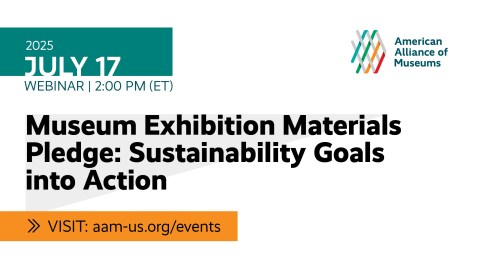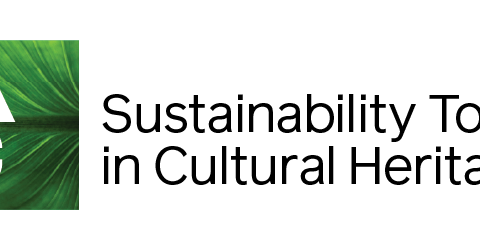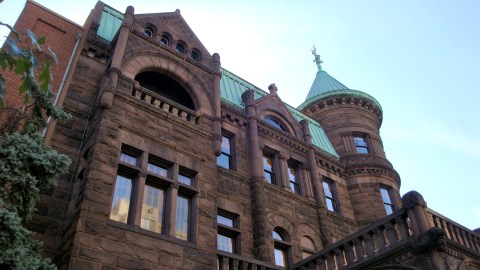Elizabeth Merritt, founding director of CFM has encouraged me to share some insights from my experience as director of the Children’s Museum of Richmond (CMoR) in dealing with the current economy. Elizabeth has confirmed my feeling, based on conversations I’ve had at the Association of Children’s Museum’s national conferences, that CMoR is a leader with regard to earned income. Our earned income makes up 72 percent of our operating income, compared to a median of 48 percent for children’s museums generally, and puts us well into the 90th percentile of earned income for museums overall. I brought our assistant director of marketing to the conference in April—she attended a session on “new and unique” earned income possibilities and came away stunned that we were already doing every one of the ideas shared, plus many more. We have to be entrepreneurial with earned income because, as you will see, the other traditional sources of support are even more challenging for us.
We have a non-profit sage in Richmond, a former board member of my museum, who advises most of our significant local organizations on strategic planning. He is a former Fortune 500 CEO who got much more interested in non-profits, and teaches at both UVA and VCU Business Schools. He tells all of us who run non-profits to strive for “forward funding” – defined by him as not spending your unrestricted contributed income in the year it is raised, but rather raising it – and then being able to budget it for use in the next year. Of course, the challenge is to make it one year without those funds so you can use them the next year. We can’t do it currently – not even close.
Fund-raising is hard for museums right now. I hear from donors pretty consistently that they are moving gifts away from “cultural” institutions and instead investing in organizations that provide food and shelter. We try hard to make the case that if young children don’t have places to play and learn, they won’t be the creative people we need in the future to help solve the world’s problems. It is a good case, but it doesn’t have the immediate impact in some donors’ minds of feeding a starving child or healing a sick child. My board chair has heard enough from donors with this perspective that he has concluded the best way to steward the donors we have is to leverage their support by squeezing every possible earned dollar we can from those who use and benefit directly from our services. Our donors express strong appreciation for this approach. Now, if we want to raise money for capital projects, particularly new exhibits, everyone steps up and we have very little challenge here. It is the operating support that proves difficult to raise. So we have been borrowing from the university model and asking for “scholarship” support directly to offset admission for economically disadvantaged children. The response seems to be much stronger to the case for expanding “access” rather than supporting operations. This is a win-win solution. We are happy to have more children-especially those who rarely get an experience like that we can provide, and the scholarship support drops to the bottom line as soon as a child has a visit. The donor feels great that a specific child had an enriching visit they would not have had otherwise thanks to their support.
My organization does not receive any government support either. We get one $30,000 grant from an arts consortium that is funded by several area municipalities, but we are on notice that that program will probably not survive next fiscal year.
These challenges, plus the culture of my board of trustees—full of young entrepreneurs who don’t have fund development connections and experience—have put increased emphasis on our earned income. I have a strong internal staff capacity in marketing that has proven to be very creative and effective in devising new products that people seem quite willing to pay for – for example, layering in extra benefits and selling higher priced memberships. We are also exploring a “sibling strategy” of leveraging our brand to offer a smaller version of the museum in areas where the demographic density of our visitor profile is much higher.
As I scan the horizon, I can see where the pressures we are experiencing are likely to impact other organizations like ours. The steps we are taking will hopefully position us to thrive in the future. Because we believe strongly that children need to play in order to learn, and families need to know how critically important learning opportunities outside of a traditional school setting are to building creative, life long learners. But if we can’t make payroll – that mission can’t be fulfilled.
I hope that we, as a field, can keep this conversation going. I am thrilled to know that CFM is looking ahead at these issues and more.
Karen S. Coltrane
President and CEO
Children’s Museum of Richmond
2626 West Broad Street
Richmond, Virginia 23220
804.474.7033 direct
kcoltrane@c-mor.org








I really appreciate Karen's perspective and for sharing it in this forum. We have also kept the doors open through the dot-com bust and 911, three rounds of presidential campaigning, Katrina, the tsunami and other disasters that have drawn away charitable contributions, largely by focusing our efforts on earned revenue, and even adding new earned revenue streams when we can. But something really scary is happening when earned revenue takes a huge dip, too — people are choosing NOT to spend discretionary money on birthday party rentals, gift store items, children's classes, parenting classes, parents night out events, field trips, off site fees for services. Is there any I am missing that others have tried? All of our earned revenue generating streams are down, way down, from two years ago.
Karen,
Thanks for this interesting post. I'd love to hear more about specifically how your earned income breaks down and which avenues you perceive to be particularly innovative and potentially unknown to the rest of the museum field.
Your blog is really cool! I will wait when you finish. Thank you for interesting articles.
more templates easy to download
I'd be interested in entering into discussions about earned income leveraging current trends in technology – virtual worlds and virtual goods. We are bringing Museums into our virtual world to both extend their educational outreach and to build support and interest by youth in these most important cultural and learning destinations. The ability to raise real money through virtual goods purchases and Learning Lab events we think holds promise for a future funding mechanism for museums. Please check out our work to date with The Field Museum of Chicago and The Tech Museum of San Jose – you can find video examples of in-world activities at http://www.youtube.com/officialkidscom